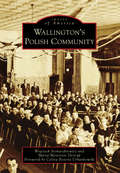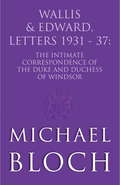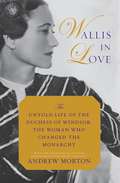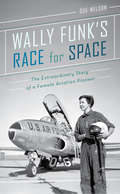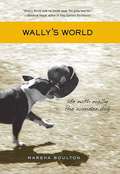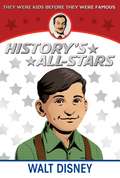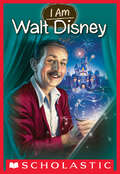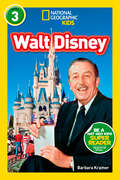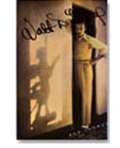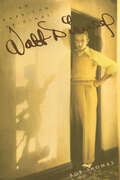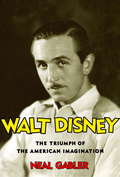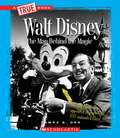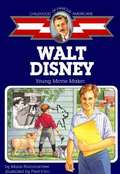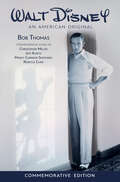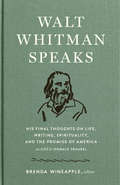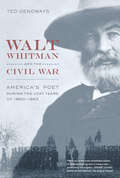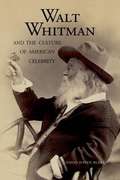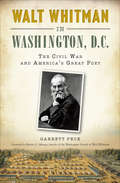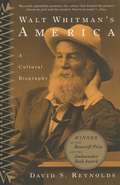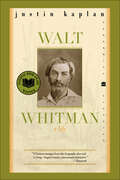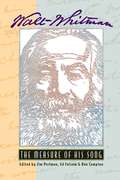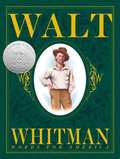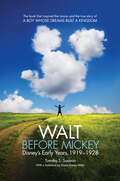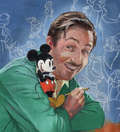- Table View
- List View
Wallington's Polish Community
by Marta Mestrovic Deyrup Bozena Celina Urbankowski Wojciech SiemaszkiewiczThe years after World War I heralded a large influx of Polish immigrants fleeing war-torn homelands in search of a better life. Drawn by the opportunity to work in the textile and manufacturing mills, Polish immigrants moved to Wallington, New Jersey, a newly incorporated borough in Bergen County. The Polish community of Wallington established themselves as local store owners and businessmen. They constructed churches and social club buildings; established restaurants, pubs, and grocery stores; and participated in the social life of their community. By the 1920s, Polish Americans began to dominate local politics; in 1929, the first Polish American mayor, Leo Strzelecki, was elected. Polish Americans became the majority in Wallington between 1935 and 1945, representing about 70 percent of the population. In 2012, Polish Americans comprise over 50 percent of Wallington's population. Through vintage photographs that capture the spiritual life of these people and the struggles they overcame, Wallington's Polish Community honors the Polish immigrants of the past while educating new generations.
Wallis and Edward, Letters: The Intimate Correspondence of the Duke and Duchess of Windsor
by Michael BlochMichael Bloch's edition of the intimate correspondence of the Duke and Duchess of Windsor, from the moment they met in 1931 up to their marriage in 1937, also containing Wallis Simpson's diary of their affair in form of her weekly letters to her aunt in Washington, was a sensational bestseller when it first appeared just after the Duchess's death, shedding as it does a wealth of fascinating new light on 'the greatest love story of the century' and the mysteries of King Edward's abdication.
Wallis and Edward, Letters: The Intimate Correspondence of the Duke and Duchess of Windsor
by Michael BlochWhen Wallis & Edward was first published in 1986, weeks after the death of the Duchess of Windsor, it caused a sensation: this was the story the world had been waiting for. For the first time, the story of Wallis Simpson and King Edward VIII was revealed in their own words. Michael Bloch's edition of their intimate correspondence takes us from the moment they met in 1931 up to their marriage in 1937, and includes Wallis Simpson's diary of their affair in form of her weekly letters to her aunt in Washington. It sheds a wealth of fascinating new light on 'the greatest love story of the century' and the mysteries of King Edward's abdication.
Wallis in Love: The Untold Life of the Duchess of Windsor, the Woman Who Changed the Monarchy
by Andrew MortonFor fans of the Netflix series The Crown and from the author of the New York Times bestseller 17 Carnations comes a captivating biography of Wallis Simpson, the notorious woman for whom Edward VIII gave up the throne. "You have no idea how hard it is to live out a great romance." -Wallis SimpsonBefore she became known as the woman who enticed a king from his throne and birthright, Bessie Wallis Warfield was a prudish and particular girl from Baltimore. At turns imaginative, ambitious, and spoiled, Wallis's first words as recalled by her family were "me, me." From that young age, she was in want of nothing but stability, status, and social acceptance as she fought to climb the social ladder and take her place in London society. As irony would have it, she would gain the love and devotion of a king, but only at the cost of his throne and her reputation.In WALLIS IN LOVE, acclaimed biographer Andrew Morton offers a fresh portrait of Wallis Simpson in all her vibrancy and brazenness as she transformed from a hard-nosed gold-digger to charming chatelaine. Using diary entries, letters, and other never-before-seen records, Morton takes us through Wallis's romantic adventures in Washington, China, and her entrance into the strange wonderland that is London society. During her journey, we meet an extraordinary array of characters, many of whom smoothed the way for her dalliance with the king of England, Edward VIII.WALLIS IN LOVE goes beyond Wallis's infamous persona and reveals a complex, domineering woman striving to determine her own fate and grapple with matters of the heart.
Wally Funk's Race for Space: The Extraordinary Story of a Female Aviation Pioneer
by Sue NelsonWally Funk was among the Mercury 13, the first group of American pilots to complete NASA's 1961 Women in Space program. Funk breezed through the rigorous physical and mental tests, her scores beating those of many of the male candidates—even John Glenn. Just one week before Funk was to enter the final phase of training, the entire program was abruptly cancelled. Politics and prejudice meant that none of the more-than-qualified women ever went to space. Undeterred, Funk went on to become one of America's first female aviation inspectors and civilian flight instructors, though her dream of being an astronaut never dimmed. <p><p>In this offbeat odyssey, journalist and fellow space buff Sue Nelson travels with Wally Funk, now approaching her eightieth birthday, as she races to make her giant leap. Covering their travels across the United States and Europe—taking in NASA's mission control in Houston and Spaceport America in New Mexico, where Funk's ride to space awaits—this is a uniquely intimate and entertaining portrait of a true aviation trailblazer.
Wally's World: Life with Wally the Wonder Dog
by Marsha BoultonIt takes about sixty-three days to make a litter of puppies, but sixty-three years later the people who loved those puppies remember the dogs they became. When a puppy that fit into a baseball cap entered bestselling author and shepherd Marsha Boulton's life she had no idea he was really a rambunctious kid in a dog suit. Wally (named after the poet Wallace Stevens), a loopy-nosed bull terrier whose face looked like a bicycle seat with eyes, became more of an experience than a dog from the moment he arrived at Lambs' Quarters Farm. He proved to be a valuable hand on the farm and an even more valuable companion. The spoiled, personality-loaded, soccer-playing pup quickly developed a penchant for high-thread-count linens, organic beef, and gourmet cooking. Life was good. Then all hell broke loose. An intense legal battle engulfed Marsha's partner, Stephen, and plunged the couple into a punishing, decade-long struggle. During that time Marsha was also diagnosed with cancer. With his indomitable spirit and wild enthusiasms, Wally's unrelenting appetite for life and carpe diem attitude renewed the couple's ability to step outside themselves and gave them the strength and perspective they needed to persevere. Whether playing class clown at puppy school or looking up the skirts of judges at dog shows, Wally the Wonder Dog ensured that serious laughter was a daily routine. Wally's World is a raucous memoir, a roller-coaster ride with an irrepressible partner in paws who is impossible to forget.
Walt Disney
by Marie Hammontree Frank IrvinWalt Disney's imagination made him an all-star in American history, and his childhood is where it all began!Walter Elias "Walt" Disney had a huge impact on the entertainment industry as an animator, film producer, director, screenwriter, voice actor, entrepreneur, philanthropist, and international icon. But what was the original voice of Mickey Mouse like as a kid? In this narrative biography, you'll learn about the childhood of the boy who grew up to win and be nominated for more Academy Awards than anyone else in history!
Walt Disney (I Am #11)
by Ms. Grace NorwichI am the creator of Mickey Mouse. I am Walt Disney.As a child, I had a wild imagination and a great curiosity. As I grew up, I used those qualities to become a cartoonist. Eventually, I turned these drawings into films and began my own animation business. One of my characters, Mickey Mouse, became so popular that movie theaters sold out and I won an Academy Award. After pursuing a career as a film producer, director, screenwriter, voice actor, entrepreneur and entertainer, I added developer to my resume when I created Disneyland amusement park. I became tremendously successful and beloved by children of all ages because of my belief that even the impossible is possible. I am Walt Disney.To this day, Walt Disney's characters remain some of the most recognizable images in the world. With books, TV shows, films, and amusement parks devoted to his creations, the Walt Disney name lives on. Learn all about this remarkable man's fascinating life in Scholastic's biography series, I AM.
Walt Disney (National Geographic Kids Readers)
by Barbara KramerFans of Disneyland, Disney World, and all things Disney are sure to enjoy learning all about the fascinating founder, Walt Disney. This new biographic reader reveals the interesting, enchanting life of one of the world's most beloved storytellers and entrepreneurs. Level 3 text provides accessible yet wide-ranging information for fluent readers.
Walt Disney: An American Original
by Bob ThomasA definitive biography of the man behind the legend. Walt Disney is an American hero--the creator of Mickey Mouse--and a man who changed the face of American culture. His is a success story like no other: a man who developed animated film into an art form and made a massive contribution to the folklore of the world.
Walt Disney: An American Original, Commemorative Edition (Disney Editions Deluxe)
by Bob ThomasThis is the Commemorative Edition of one of the most trusted and respected nonfiction books about Walt Disney ever written!Includes 4 commemorative essays; a photo insert with more than 60 behind-the-scenes images; and an endnotes section with insightful passages from 15 Disney historians and authors to provide further context for modern audiences.Walt Disney is an American hero. From Mickey Mouse to Disneyland, he changed the face of American culture. His is a success story like no other: a man who developed animated film into an art form and made a massive contribution to the folklore of the world.After years of research, respected Hollywood biographer Bob Thomas produced this definitive biography of the person behind the legend of Disney: the unschooled cartoonist from Kansas City, Missouri, who—though his initial studio went bankrupt during his first movie venture—developed into a creative spirit who produced unmatched works of entertainment that have influenced generations. Inside the Commemorative Edition paperback:• Special essays by Christopher Miller, Jeff Kurtti, Marcy Carriker Smothers, and Rebecca Cline and an updated index from the 2023 edition• Preface by Bob Thomas from the 1994 edition• Foreground, 28 chapters, and sources by Bob Thomas from the 1976 edition• Endnotes excerpting 15 books that have furthered Bob&’s research from the 2023 edition• 32-page photo insert with more than 60 behind-the-scenes images from the 2023 editionSearching for information about Walt Disney? Explore more books from Disney Editions:The Official Walt Disney Quote BookPeople Behind the Disney Parks: Stories of Those Honored with a Window on Main Street, U.S.A.Maps of the Disney Parks: Charting 60 Years from California to ShanghaiWalt's Disneyland: A Walk in the Park with Walt DisneyThe Story of Disney: 100 Years of Wonder
Walt Disney: The Biography
by Neal GablerThe definitive portrait of one of the most important cultural figures in American history. Walt Disney was a true visionary whose desire for escape, iron determination and obsessive perfectionism transformed animation from a novelty to an art form, first with Mickey Mouse and then with his feature films-most notably Snow White, Fantasia, and Bambi. In his superb biography, Neal Gabler shows us how, over the course of two decades, Disney revolutionized the entertainment industry. In a way that was unprecedented and later widely imitated, he built a synergistic empire that combined film, television, theme parks, music, book publishing, and merchandise. Walt Disney is a revelation of both the work and the man-of both the remarkable accomplishment and the hidden life.From the Trade Paperback edition.
Walt Disney: The Man Behind The Magic (A True Book - Great American Business)
by Tamra B. OrrExplore important business concepts and take a look at the lives of some of the most important entrepreneurs in history. Fascinating text details the life stories and accomplishments of world-changing businessleaders. Readers are also provided with the knowledge they need to understand the basics of the economy and start businesses of their own.
Walt Disney: Young Movie Maker (Childhood of Famous Americans Series)
by Marie HammontreeA fictionalized biography concentrating on the boyhood of the cartoonist and filmmaker who created Mickey Mouse and Donald Duck.
Walt Disney: an American Original, Commemorative Edition (Disney Editions Deluxe)
by Bob ThomasThis is the Commemorative Edition of one of the most trusted and respected nonfiction books about Walt Disney ever written!Includes 4 commemorative essays; a photo insert with more than 60 behind-the-scenes images; and an endnotes section with insightful passages from 15 Disney historians and authors to provide further context for modern audiences.Walt Disney is an American hero. From Mickey Mouse to Disneyland, he changed the face of American culture. His is a success story like no other: a man who developed animated film into an art form and made a massive contribution to the folklore of the world.After years of research, respected Hollywood biographer Bob Thomas produced this definitive biography of the person behind the legend of Disney: the unschooled cartoonist from Kansas City, Missouri, who—though his initial studio went bankrupt during his first movie venture—developed into a creative spirit who produced unmatched works of entertainment that have influenced generations. Inside the Commemorative Edition paperback:• Special essays by Christopher Miller, Jeff Kurtti, Marcy Carriker Smothers, and Rebecca Cline and an updated index from the 2023 edition• Preface by Bob Thomas from the 1994 edition• Foreground, 28 chapters, and sources by Bob Thomas from the 1976 edition• Endnotes excerpting 15 books that have furthered Bob&’s research from the 2023 edition• 32-page photo insert with more than 60 behind-the-scenes images from the 2023 editionSearching for information about Walt Disney? Explore more books from Disney Editions:The Official Walt Disney Quote BookPeople Behind the Disney Parks: Stories of Those Honored with a Window on Main Street, U.S.A.Maps of the Disney Parks: Charting 60 Years from California to ShanghaiWalt's Disneyland: A Walk in the Park with Walt DisneyThe Story of Disney: 100 Years of Wonder
Walt Whitman Speaks: A Library of America Special Publication
by Walt WhitmanFor the Whitman bicentennial, a delightful keepsake edition of the incomparable wisdom of America's greatest poet, distilled from his fascinating late-in-life conversations with Horace Traubel.Toward the end of his life, Walt Whitman was visited almost daily at his home in Camden, New Jersey, by the young poet and social reformer Horace Traubel. After each visit, Traubel meticulously recorded their conversation, transcribing with such sensitivity that Whitman’s friend John Burroughs remarked that he felt he could almost hear the poet breathing. In Walt Whitman Speaks, acclaimed author Brenda Wineapple draws from Traubel’s extensive interviews an extraordinary gathering of Whitman’s observations that conveys the core of his ethos and vision. Here is Whitman the sage, champion of expansiveness and human freedom. Here, too, is the poet’s more personal side—his vivid memories of Thoreau, Emerson, and Lincoln, his literary judgments on writers such as Shakespeare, Goethe, and Tolstoy, and his expressions of hope in the democratic promise of the nation he loved. The result is a keepsake edition to touch the soul, capturing the distilled wisdom of America’s greatest poet.
Walt Whitman and the Civil War: America’s Poet during the Lost Years of 1860-1862
by Ted GenowaysShortly after the third edition of Leaves of Grass was published, in 1860, Walt Whitman seemed to drop off the literary map, not to emerge again until his brother George was wounded at Fredericksburg two and a half years later. Past critics have tended to read this silence as evidence of Whitman's indifference to the Civil War during its critical early months. In this penetrating, original, and beautifully written book, Ted Genoways reconstructs those forgotten years—locating Whitman directly through unpublished letters and never-before-seen manuscripts, as well as mapping his associations through rare period newspapers and magazines in which he published. Genoways's account fills a major gap in Whitman's biography and debunks the myth that Whitman was unaffected by the country's march to war. Instead, Walt Whitman and the Civil War reveals the poet's active participation in the early Civil War period and elucidates his shock at the horrors of war months before his legendary journey to Fredericksburg, correcting in part the poet's famous assertion that the "real war will never get in the books."
Walt Whitman and the Culture of American Celebrity
by David Haven BlakeThis book tells the story of how an obscure Brooklyn poet, better known for his political journalism than verse, immersed himself in the culture of celebrity that was then emerging in the United States. Hoping to redress the mounting divisions in his country, he declared that the poet would become the center of American civic life, that he would command more power and sway than the political representatives he expected to supersede. As Whitman imagined it, the story of celebrity would be the story of democracy. He hoped that the nation's narrow political institutions would undergo an extraordinary transformation once they encountered the populist power embodied in the poet's fame.
Walt Whitman in Washington, D.C.: The Civil War and America's Great Poet
by Garrett Peck&“An energetic study of the famed writer&’s time in the nation&’s capital and the loves of his life&” (Washington Independent Review of Books). Walt Whitman was already famous for Leaves of Grass when he journeyed to Washington at the height of the Civil War to find his brother George, a Union officer wounded at the Battle of Fredericksburg. Eventually, Whitman would serve as a volunteer &“hospital missionary&”—making more than six hundred hospital visits and serving over eighty thousand sick and wounded soldiers in the next three years. With the 1865 publication of Drum-Taps, Whitman became poet laureate of the Civil War, aligning his legacy with that of Abraham Lincoln. He remained in Washington until 1873 as a federal clerk, engaging in a dazzling literary circle and fostering his longest romantic relationship, with Peter Doyle. This fascinating blend of biography and history details the definitive account of Walt Whitman&’s decade in the nation&’s capital. Includes photos!
Walt Whitman's America: A Cultural Biography
by David S. ReynoldsIn his poetry Walt Whitman set out to encompass all of America and in so doing heal its deepening divisions. This magisterial biography demonstrates the epic scale of his achievement, as well as the dreams and anxieties that impelled it, for it places the poet securely within the political and cultural context of his age. Combing through the full range of Whitman's writing, David Reynolds shows how Whitman gathered inspiration from every stratum of nineteenth-century American life: the convulsions of slavery and depression; the raffish dandyism of the Bowery "b'hoys"; the exuberant rhetoric of actors, orators, and divines. We see how Whitman reconciled his own sexuality with contemporary social mores and how his energetic courtship of the public presaged the vogues of advertising and celebrity. Brilliantly researched, captivatingly told, Walt Whitman's America is a triumphant work of scholarship that breathes new life into the biographical genre.From the Trade Paperback edition.
Walt Whitman: A Life
by Justin KaplanThe Pulitzer Prize and National Book Award-winning author “gives us flesh and blood Whitman in this fine and sensitive biography” (The Boston Globe).A moving, penetrating, sharply focused portrait of America’s greatest poet—his genius, his passions, his androgynous sensibility—an exuberant life entwined with the turbulent history of mid-nineteenth century America. In vivid detail, Justin Kaplan, winner of the Pulitzer Prize and the National Book Award, examines the mysterious selves of this enigmatic man whose bold voice of joy and sexual liberation embraced a growing nation . . . and exposes the quintessential Whitman, that perfect poet whose astonishing verse made “words sing, dance, kiss, copulate” for an entire world to hear.“Whitman emerges from this biography alive and kicking—hugely human, enormously attractive.” —Newsweek“Not only readable, but dramatic.” —The New York Times Book Review“A buoyant, energizing book.” —The Nation“Brilliant.” —Publishers Weekly
Walt Whitman: The Measure of His Song
by Ed Folsom Dan Campion Jim PerlmanFirst published to wide critical acclaim in 1981, this revised and expanded monumental anthology charts the ongoing American and international response to the legacy of the seminal poet Walt Whitman (1819-1892). <P> Beginning with Ralph Waldo Emerson's famous 1855 letter ("I greet you at the beginning of a great career..."), this new edition contains responses from Thoreau, Pound, Lawrence, Neruda, Borges, Ginsberg, Jordan, Duncan, Le Sueur, Rich, Snyder and Alexie, among many others. "I know of no more convincing proof of Walt Whitman's impact upon the poetic mind (both at home and abroad) than this collection of tributes by poets -- in prose and verse" -- Gay Wilson Allen, The Solitary Singer.Includes 17 black & white photos.
Walt Whitman: Words for America
by Brian Selznick Barbara KerleyThe pioneering team that brought you the Caldecott Honor-winning THE DINOSAURS OF WATERHOUSE HAWKINS focuses their remarkable skills and vision on Walt Whitman--poet, American, Civil War hero. Did you know that poet Walt Whitman was also a Civil War nurse? Devastated by his country dividing and compelled to service by his brother's war injury, Walt nursed all soldiers-Union & Confederate, black & white. By getting to know them through many intense and affecting experiences, he began to see a greater life purpose: His writing could give these men a voice, & in turn, achieve his greatest aspiration--to capture the true spirit of America. Dramatic, powerful, & deeply moving, this consummate portrait of Whitman will inspire readers to pick up their pens & open their hearts to humanity.<P><P> Winner of the Sibert Honor
Walt before Mickey: Disney's Early Years, 1919-1928
by Timothy S. SusaninFor ten years before the creation of Mickey Mouse, Walt Disney struggled with, failed at, and eventually mastered the art and business of animation. Most biographies of his career begin in 1928, when Steamboat Willie was released. That first Disney Studio cartoon with synchronized sound made its main character—Mickey Mouse—an icon for generations. But Steamboat Willie was neither Disney's first cartoon nor Mickey Mouse's first appearance. Prior to this groundbreaking achievement, Walt Disney worked in a variety of venues and studios, refining what would become known as the Disney style. In Walt before Mickey: Disney's Early Years, 1919–1928, Timothy Susanin creates a portrait of the artist from age seventeen to the cusp of his international renown. After serving in the Red Cross in France after World War I, Walt Disney worked for advertising and commercial art in Kansas City. Walt used these experiences to create four studios—Kaycee Studios, Laugh-O-gram Films, Disney Brothers Studio, and Walt Disney Studio. Using company documents, private correspondence between Walt and his brother Roy, contemporary newspaper accounts, and new interviews with Disney's associates, Susanin traces Disney's path. The author shows Disney to be a complicated, resourceful man, especially during his early career. Walt before Mickey, a critical biography of a man at a crucial juncture, provides the “missing decade” that started Walt Disney's career and gave him the skills to become a name known worldwide.
Walt's Imagination: The Life of Walt Disney (Big Words #10)
by Doreen RappaportWalt Disney's name is synonymous with family entertainment. Mickey Mouse, Snow White and the Seven Dwarfs, Bambi, Disneyland, and numerous other creations have inspired generations of children the world over. From his childhood in rural Missouri to his legendary stature as a film and television icon, Walt governed his life with imagination, ingenuity, and scrupulous attention to detail. Faced with both public failures and massive success, he revolutionized the art form of animation, always seeking innovative solutions, cutting edge technology, and new ways of storytelling. Devoted to perfection, Walt was not always easy to work with, but no one can deny his profound talent and impact. Charting Walt's progression from farm boy to actor to artist, animator, director, and entertainment celebrity, Walt's own words are presented and contextualized within Doreen Rappaport's signature compelling prose. Illustrated with vivid authenticity by animator/painter John Pomeroy, this stunning entry in the award-winning Big Words series reveals a man of deep and varied passions with a constantly evolving vision, and a storyteller above all.
